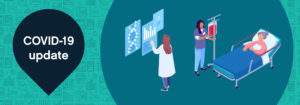Modern, tech-enabled innovations are demonstrating immense potential to transform the way healthcare is planned, delivered and paid for in the United States—but how much do you know about how these innovations really work? It can be hard to trust data-driven insights when you don’t have a clear view into how source information is being used and what analytics processes are being applied to produce those insights.
For this blog post, we sat down with David Schweppe and Matthew Hanauer on Linkedin Live to get simple explanations of a few basic data science principles. Read on to explore what is going on ‘behind the scenes’ of predictive healthcare technology.
1. Statistical modeling
Traditional statistical modeling capabilities still have their place, but the complex world of healthcare now demands more specificity and actionability than these models can offer. Next-generation statistical modeling allows providers and payers to be proactive and level up care delivery and management.
| Traditional | Next generation |
| Identifies factors contributing to particular observed phenomena | Predicts which factors may influence phenomena and explains how |
| Expands general understanding of healthcare trends and consumer behaviors | Assesses magnitude, speed, and valence of trends and behaviors to understand influence and impact |
| Equips data analysts with the information necessary to construct an action plan | Turns visible inputs into actionable outputs, allowing anyone to participate in the data-driven movement |
| Delivers answers based on averages for a specific situation | Extracts granular insights and personalized forecasts at every level—patient, community, provider, system, and industry. |
| Utilizes individual data sets or pieces together inputs from siloed sources | Presents a unified view of disparate data sources (e.g. clinical, claims, SDOH, etc.) for comprehensive understanding and effective action |
2. Cyclical processes
Data offers answers, but it also often stimulates more questions. We believe a healthy model is just that—a model. Users and leaders alike must engage fully in the cyclical process of data-driven decision making.
In this clip, Dave and Matt illustrate the iterativeness of data science using two example situations: (1) rising hypertension costs and (2) behavioral health drivers.
The beauty of this adaptability is that you can examine the same scenario from multiple angles, tweaking various factors to see what might happen and how your organization might need to adjust accordingly.
3. Why, why, and why again
Keep asking why, David says, until you get to the bottom of something. AI can suggest opportunities, identify outliers, forecast trends, and much more—but acting without full understanding is still unwise.
Our technologies and tools are not designed to be wielded thoughtlessly; there is still a critical human element at play. Dashboards are powerful summaries, but don’t be afraid to get into the nitty gritty. Drill down. Access more details. Understand the intricacies of a population health challenge by examining individual patient situations. Go deeper on denial trends to stop a problem before it becomes one. Users and leaders alike must leverage their own experiences and areas of expertise to interpret recommendations contextually and implement changes strategically.
Lightning Round!
At the end of each LinkedIn Live session, we ask our guests three quick, big-picture healthcare questions:
- What is one thing in healthcare that has you really excited right now?
- If you could solve one major challenge for healthcare organizations, what would it be?
- What is one key trend that you’re keeping an eye on? Anything we should be watching and researching?
Hear Dave and Matt’s answers:
Stay tuned on LinkedIn for more live events, timely resources, and more!
Get our take on industry trends
Data visualization: A picture is worth a thousand…healthcare data points?
The amount of data produced daily has grown exponentially with nearly 90% of the world’s data generated in the last two years alone. To ensure we can make sense of this data, analysts must find meaningful ways to present the information to their audiences.
Read on...How did we get here? Hospital analytics and the new normal
I have heard the word “unprecedented” so many times in 2020 that it has lost its significance; many of us have become desensitized to the extraordinary changes in the world this year.
Read on...How to help employer groups plan in a time of uncertainty
Employers and their sponsored health plans are thinking about next year’s benefit designs with a significant challenge not seen before: the effect of the coronavirus pandemic. There are important considerations to take into account before making any decisions about new or existing coverage. Becky Niehus, a director of Product Consulting at MedeAnalytics, explores these new issues and what employers can do to ensure employees are “covered.”
Read on...Healthcare’s return to “normal” after COVID-19: Is it possible?
As providers determine how to get patients to return to facilities for routine disease management and preventive screenings, opportunities are ripe for the application of analytics to triage at the right time to the right setting. Data related to COVID-19 will continue to flow rapidly, but there are possibly more questions than answers now about a return to “normal.”
Read on...


